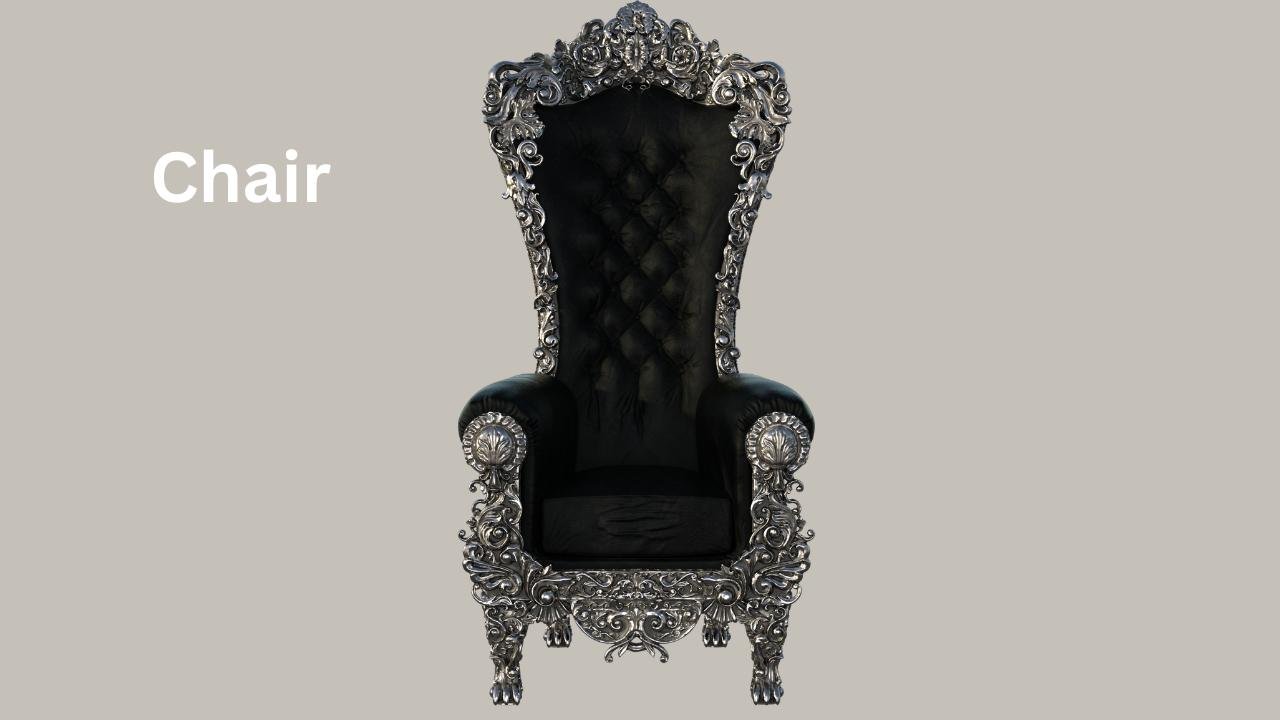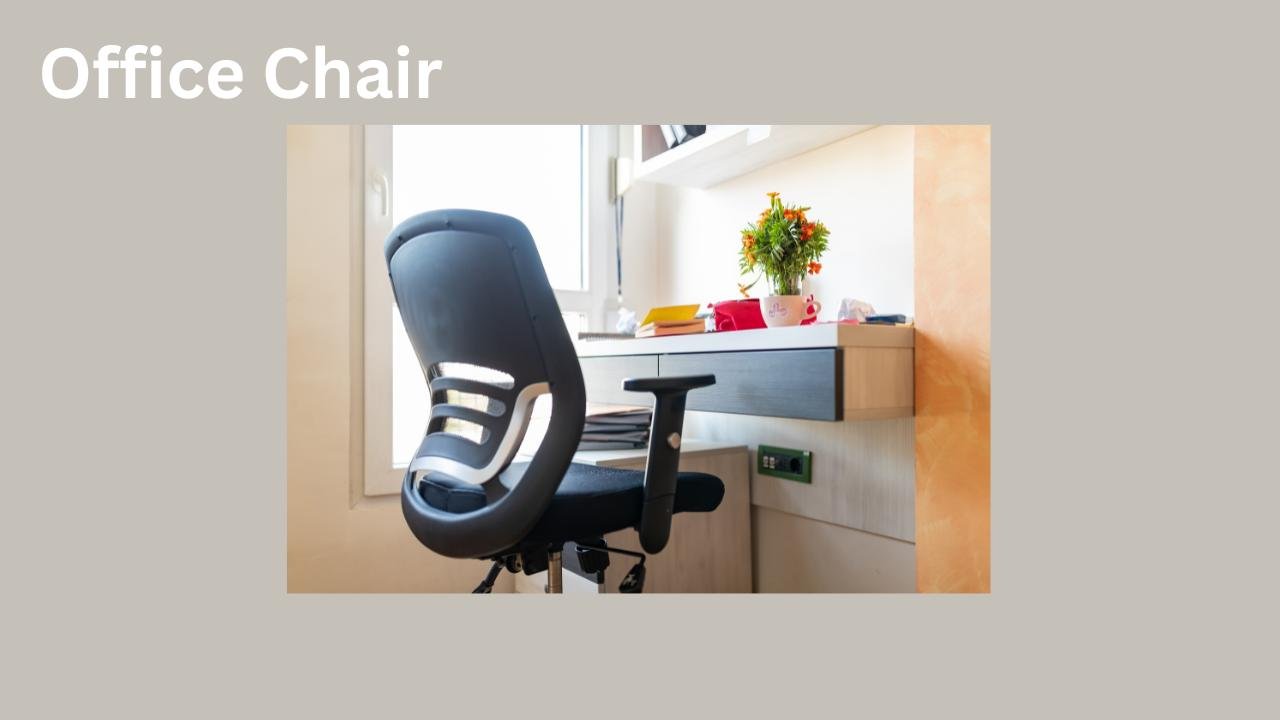(choose the perfect office chair) When it comes to creating a comfortable and productive workplace, choosing the right office chair is crucial. After all, many of us sit at our desks for long periods of time, and a poorly designed chair can cause discomfort, poor posture, and even health issues. In this article, we’ll explore five easy ways to choose the right office chair that provides both comfort and support. Whether you’re setting up a home office or looking to upgrade your current chair, these tips will help you make an informed decision.
Table of Contents
1. Consider Ergonomics
When choosing an office chair for optimal comfort and support, one of the major factors to consider is ergonomics. Ergonomics refers to the science of designing furniture and equipment that fits the natural movements and postures of the human body. An ergonomic office chair is specifically designed to provide proper support and alignment to the body, reduce the risk of musculoskeletal disorders, and promote overall well-being.
To ensure that the office chair you choose is ergonomic, look for chairs that offer adjustable features. The ability to adjust seat height, backrest tilt, and armrest height allows you to customize the chair to fit your unique body proportions. This adjustment is important because it enables you to find the right position that promotes good posture and reduces stress on your neck, back, and shoulders.
Another essential aspect of ergonomics is lumbar support. The low back, or lumbar spine, naturally curves inward, and sitting for long periods of time without proper support can lead to discomfort and back pain. An ergonomic office chair should have built-in lumbar support that maintains the natural curve of your spine. This support helps reduce pressure on the lower back, promote a healthy sitting posture, and reduce the risk of developing chronic pain.
In addition to adjustability and lumbar support, consider the overall design of the chair. Look for chairs with contoured seats that provide ample cushioning. The seat should distribute your weight evenly and reduce pressure points, ensuring a comfortable seating experience. The backrest should also provide adequate support while following the natural curve of your spine and providing stability.
When it comes to armrests, choose a chair that allows you to adjust their height. Correctly placed armrests help to relax your shoulders and prevent upper body strain. Adjusting the armrests to the correct height ensures that your arms are in a comfortable position, reducing stress on your wrists and forearms.
In addition, the material of the chair plays a role in ergonomics as well. Opt for breathable fabric or mesh chairs that allow air circulation, prevent heat build-up, and keep you cool throughout the day. A chair with good breathability is especially important if you sweat or work in a hot environment. On the other hand, leather chairs look attractive but are not breathable.
Lastly, ergonomics is an important factor when choosing the right office chair for comfort and support. By choosing a chair that offers adjustable features, lumbar support, and a comfortable design, you can ensure that your body is properly supported during long periods of sitting. Prioritizing ergonomics not only increases your comfort but also increases productivity and reduces the risk of work-related injuries. Invest in an ergonomic office chair and make your well-being a priority in the workplace.

2. Test the Chair’s Comfort
When choosing the right office chair for comfort and support, it is essential to test the comfort of the chair before making a decision. Comfort is subjective, and what works for one person may not work for another. Testing a chair allows you to assess how it feels and determine whether it provides the level of comfort you need to sit for long periods of time.
Start by sitting in a chair for longer periods of time, preferably at least 15 minutes. Pay attention to how your body feels during this. Does the chair provide enough support for your back? Is the seat cushion comfortable? Does it distribute your weight evenly without creating pressure points? These are important factors to consider when evaluating comfort.
Pay attention to any areas of discomfort or tension. A chair that’s too hard can cause pressure points, which can lead to discomfort and potential health problems. Conversely, a chair that is too soft may lack the necessary support, causing you to slump into it and lose proper posture. It’s important to strike the right balance between cushioning and support for optimal comfort.
Additionally, consider the dimensions of the chair as well. Make sure the seat is wide enough to accommodate your body comfortably. A chair that is too narrow may feel constricted, while a chair that is too wide may not provide enough support. Look for a chair that allows you to sit with your feet flat on the ground and knees at a 90-degree angle for proper posture.
Also, pay attention to the armrests during the test process. Are they at the correct height? Do they support your arms without causing tension or discomfort? Adjust the armrests to different heights and see which position feels most comfortable for you. Remember that ergonomic armrests should allow your shoulders to rest and your arms to rest comfortably when typing or doing other tasks.
Also, test the backrest of the chair. Lean back and assess the level of support it provides. Does it follow the natural curve of your spine? Is it adjustable, allowing you to find the most comfortable angle for reclining? A well-designed backrest should provide proper lumbar support and promote good posture.
Finally, consider any additional features that contribute to comfort. Some chairs offer features such as headrests or footrests, which can enhance your overall seating experience. Evaluate whether these features add value and increase your comfort level.
By thoroughly testing chair comfort, you can make an informed decision and choose a chair that will provide the comfort and support you need to sit for long periods of time. Remember that comfort is subjective, and what works for one person may not work for another. Trust your own judgment and prioritize your own convenience to create a workspace that promotes productivity and well-being.
3. Choose the Right Material
When it comes to choosing the right office chair for comfort and support, choosing the right material is an important consideration. The material of a chair not only affects its aesthetics but also plays a role in its overall comfort and durability. By understanding the different materials available, you can make an informed decision that best suits your preferences and needs.
A popular choice for office chairs is breathable fabric. Fabric chairs are known for their comfort and softness, providing a comfortable seating experience. They also provide breathability, allowing air to circulate and preventing heat build-up. This is especially beneficial if you work in a hot environment or if you sweat easily when sitting for long periods of time. Additionally, fabric chairs come in a wide range of colors and patterns, allowing you to choose a style that matches your office decor.
Another material option is mesh. Mesh chairs are designed with mesh fabric spread over the seat and backrest. The design provides excellent breathability and airflow, keeping you cool and comfortable all day long. Mesh chairs are known for their modern and minimalist look, making them a popular choice in contemporary office settings. They are also lightweight and easy to clean, offering convenience and practicality.
On the other hand, leather chairs are often chosen for their elegance and sophistication. Leather lends a classy look and adds a touch of professionalism to any workspace. However, it’s important to note that leather may not be as breathable as fabric or mesh. If breathability is a top priority for you, consider choosing a perforated leather chair or a chair that combines leather with other breathable materials.
When choosing a material, consider factors such as maintenance and cleaning. Some materials are easier to clean and maintain than others. Fabric chairs may require regular vacuuming or spot cleaning, while leather chairs may require occasional conditioning to keep the material supple and prevent cracking. Evaluate your lifestyle and office environment to determine the maintenance level you’re willing to invest in.
Finally, think about the durability of the material. Office chairs are subject to daily use and wear and tear, so it’s important to choose a material that can withstand the demands of a busy work environment. Look for chairs with sturdy construction and high-quality materials. Reading customer reviews and checking the reputation of the manufacturer can provide information about a chair’s durability.
By considering office chair materials, you can enhance your seating experience and ensure long-lasting comfort and support. Whether you prefer breathable fabric, cool mesh, or the beauty of leather, choose a material that suits your preferences, matches your office style, and meets your practical needs. A well-chosen material contributes to the overall aesthetics, comfort, and durability of your office chair, making it a valuable investment in your work environment.
4. Check the Chair’s Adjustability
When searching for the ideal office chair that provides comfort and support, it is important to check the adjustability of the chair. An adjustable chair allows you to customize various features to suit your individual needs and preferences. This level of customization ensures that you can achieve optimal comfort and maintain proper posture while sitting for long periods of time.
Begin by checking the seat height adjustment of the chair. The seat should be adjustable to accommodate your height and ensure that your feet are flat on the ground and your knees are bent at a 90-degree angle. This position promotes healthy blood circulation and reduces stress on your lower back. Adjust the seat height to find the most comfortable and ergonomic position for your body.
Next, assess the chair’s backrest adjustment. A well-designed office chair should allow you to adjust the backrest tilt to support your preferred sitting posture. The ability to lean back and lean back slightly can help reduce pressure on your spine and provide comfort during breaks. Look for chairs with a locking mechanism that allows you to secure the backrest at your desired angle.
Also, check whether the chair has adjustable armrests. Properly positioned armrests are essential to reducing stress on your shoulders, neck, and arms. Adjustable armrests enable you to position them at just the right height, allowing your arms to rest comfortably and promoting proper alignment when typing or doing other tasks. Make sure the armrests are wide and padded enough for optimum support and comfort.
Also, consider the presence of lumbar support adjustment. The low back region, or lumbar spine, naturally curves inward. An office chair with adjustable lumbar support allows you to customize the level of support to maintain the natural curve of your spine. Proper lumbar support helps prevent bending and promotes healthy posture, reducing the risk of back pain and discomfort.
In addition to these adjustable features, some chairs also offer other customizable options such as headrests, seat depth adjustments, and even tension controls for the reclining mechanism. Evaluate these features based on your specific needs and preferences. Having the ability to mold the chair to your body ensures a personalized and comfortable seating experience.
Remember that everyone’s body is unique, and what works for one person may not work for another. When checking the adjustability of a chair, take the time to experiment with different settings and find the combination that feels most comfortable and supportive to your body. Your office chair should suit your needs, thereby promoting a healthy and ergonomic workspace.
By prioritizing chair adjustability, you can create a personalized seating experience that adapts to your body and promotes long-term comfort. An adjustable office chair not only contributes to your well-being but also boosts your productivity and concentration. Take advantage of the customizable features available to you and make sure your office chair provides the support and flexibility you need for a comfortable and ergonomic work environment.
5. Consider Durability and Warranty
When choosing the right office chair for comfort and support, it is essential to consider both durability and warranty. Investing in a chair that is built to last ensures that you will have a reliable and long-lasting seating solution. Additionally, the warranty provided by the manufacturer gives you peace of mind, knowing that you are protected against any defects or problems that may arise.
Begin by examining the construction and materials of the chair. A durable office chair is usually made from high-quality materials and has a sturdy construction. Look for chairs with sturdy frames, preferably made of metal or reinforced plastic. Upholstery should be made of durable fabric, mesh, or leather that can withstand daily use and resist wear and tear. Checking customer reviews and ratings can provide valuable information about the durability of the chair.
Also, consider the weight capacity of the chair. Make sure it can handle your body weight comfortably. A chair with a higher weight capacity is generally more sturdy and durable. It’s important to choose a chair that can accommodate your weight without compromising its structural integrity or comfort.
Besides durability, warranty is an essential factor to consider. A reputable manufacturer will provide a warranty that will cover any defects or damages that occur within a specified period. Warranty terms can vary, so read them carefully to understand what’s covered and for how long. The long warranty period indicates the manufacturer’s confidence in the quality and durability of their product.
Note any additional service or support provided by the manufacturer. Some companies offer excellent customer service, making it easy to resolve any issues with your chair. Having responsive customer support can be invaluable if you run into any difficulties or have questions about your chair.
Finally, consider reading customer reviews and testimonials to assess the chair’s durability and performance. Real-life experiences from other users can provide insight into how well the chair holds up over time. Look for reviews that specifically mention the chair’s durability and reliability to get a better understanding of the chair’s long-term performance.
By considering both durability and warranty, you can make an informed decision and choose an office chair that offers both comfort and longevity. A durable chair will withstand the rigors of daily use and provide lasting support. Additionally, the warranty gives you the assurance that the manufacturer stands by its product, providing the support and protection you need.
Remember, investing in a high-quality, durable office chair is a wise decision. This not only ensures your comfort and well-being but also contributes to your productivity and overall satisfaction in the workplace. By prioritizing durability and checking warranties, you can choose a chair that will serve you well for years to come.

Conclusion (choose the perfect office chair)
Choosing the right office chair for comfort and support is not a difficult task. By considering principles of ergonomics, prioritizing comfort, choosing the right materials, checking adjustability, and considering durability and warranties, you can make an informed decision. Remember that the right office chair can contribute to your overall well-being and productivity, so take the time to choose wisely.
FAQs
Q: How do I know if an office chair is ergonomic?
ANS: An ergonomic office chair typically offers adjustable features, and lumbar support, and promotes proper posture. Look for chairs that have these features.
Q: Are mesh chairs comfortable for long hours?
ANS: Yes, mesh chairs are designed to provide breathability and airflow, making them comfortable to sit on for long periods of time.
Q: How often should I replace my office chair?
ANS: The lifespan of an office chair depends on its quality and usage. However, it is recommended to replace your chair every 5-10 years or when it shows signs of wear and tear.
Q: Can I use an office chair on a carpeted floor?
ANS: Yes, many office chairs are suitable for use on carpeted floors. However, consider using a chair mat to protect your carpet from damage and make walking easier.
Q: What is the average cost of a good-quality office chair?
ANS: The price of office chairs can vary depending on the brand, features and material. On average, a good quality office chair can range from $200 to $500 or more.












4 thoughts on “5 Easy Ways to Choose the Perfect Office Chair for Comfort and Support”